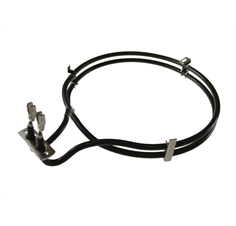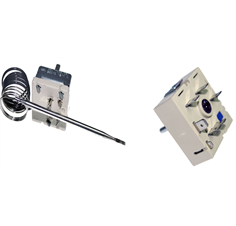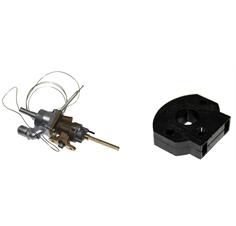
If you think your Belling oven may be broken, it's time to take a look at the reasons why this might be and what you can do to fix it. From not cooking your food at all to burning your food to a crisp, we have a solution to your problem.
Please note: we would strongly recommend you use a qualified gas-safe or electrical engineer to diagnose and carry out the repair for your appliance.
Common Causes
There isn't just one fault that could cause your appliance to stop working. So we've compiled a list of the different Belling cooker parts that may be broken if your cooker or oven isn't working.
- Electric oven element.
- Gas or electric thermostat.
- Hob element.
- Gas ignition electrode.
What You'll Need
In order to make sure you have the smoothest repair possible, it's important that you find the following details to find the correct replacement part.
- Model and serial number - this will be found on a data badge on your cooker or oven.
- Owner's manual (optional).
Once you've found the source of the problem, don't hesitate to call our team on 02920 452 510, email us at enquiries@cookerspareparts.com, or enter your model and serial number details in the search bar above.

Belling Oven is Not Heating Up
You can test whether your Belling oven is heating up correctly by turning the oven on, setting the temperature and letting it sit for five minutes.
If the oven cavity is not hot when you open the door, it is likely that your oven element is broken.

The Fix
The electric oven element is the piece of the oven which is responsible for providing heat to the oven, so if this is broken your oven will not heat up at all.
Luckily, cooker elements can be replaced quite easily and are reasonably priced at around £10-£30. We've even got a step-by-step guide to help you replace your broken part.
If you think this is your issue, feel free to call our sales team on 02920 452 510, email us on enquiries@cookerspareparts.com, or use the search bar above with your model and serial number.
Buy Oven Elements
Belling Oven is Getting Too Hot
If you believe your Belling oven is not working because it is getting too hot, there may be an issue with your electric/gas thermostat. This is the part which ensures the oven reaches the temperature you have set and not above.


The Fix
Electric thermostats can be a tricky part of the oven to replace, so we've created a handy guide on how you can do just this. However, due to the dangerous nature of gas parts, we suggest you get a qualified gas-safe registered engineer to carry out this repair.
Need help sourcing the correct replacement part? Give our team a call on 02920 452 510, email us on enquiries@cookerspareparts.com, or use the search bar above with your model and serial number.
Buy Electric Thermostats Buy Gas Thermostats
Belling Oven Hob is Not Working
As you will know, the hob is an essential part of any gas or electric cooker. If you find these aren't heating up at all, it may be time to take a look at the hotplate element or the gas ignition electrode.

The Fix
If you've got an electric Belling cooker, you will most likely be in need of a solid, ceramic or induction hotplate element to get your oven hob to heat up again. Though this may seem a little tricky, you can use our useful guide on how to replace a ceramic hob element!
On the other hand, if you have a gas Belling cooker and the flame is not lighting on your hob, this may be due to the ignition electrode being broken. These are the parts of the oven which provide the spark to ignite the gas flame.
Need further assistance? Give our sales team a call on 02920 452 510, email us on enquiries@cookerspareparts.com, or use the search bar above with your model and serial number.
Buy Hotplate Elements Buy Ignition Electrodes

Unable to find the solution to your problem or need help finding the correct part for your appliance?
Feel free to contact our spares team on 02920 452 510 or email us on enquiries@cookerspareparts.com with your model and serial number details.